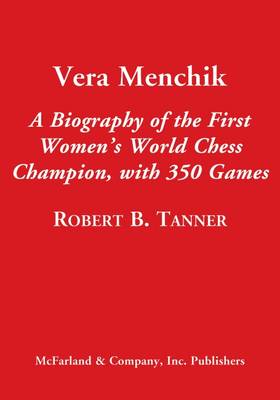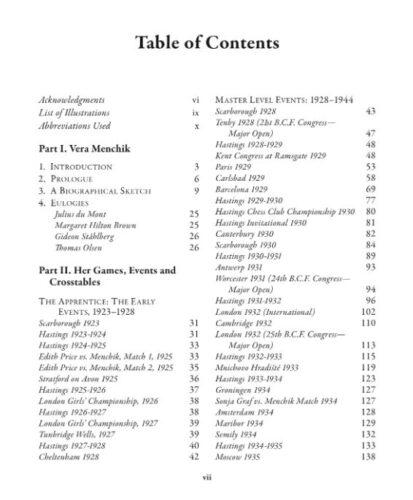Disclaimer 1: The following article contains several affiliate links to Amazon.com, meaning that if you go to Amazon and buy the recommended product (or some other product in an allotted period of time), the author of these lines will get a commission % from the purchase
Disclaimer 2: The following article is an excerpt from my article titled Best Chess Books 2022 in which I reviewed 20 chess books
Robert B. Tanner: Vera Menchik – A Biography of the First Women’s World Chess Champion, with 350 games
Last but not least, one of the last books I have read in 2022 was a book devoted to the life of the first female World Chess Champion – Vera Menchik.
Before we get to the actual book, allow me to make a small digression and talk a bit about how and why I decided to get it in the first place. In the past, I have written about the History of the World Chess Championship in great detail in the past, but it was a list of articles devoted primarily to the Male/Classical Championship. Logically, somewhere toward the end of 2022, I realized it might be a very cool idea to also write about the history of the Women’s Chess Championship – not only because I agree with the sentiment that ignoring it is one of the confirmation of the male bias, but also because I genuinely think the lives and games of female chess players and early trailblazers are as equally fascinating, rich and sometimes tragic as those of their male counterparts.
Alas, during my preliminary research of the early Women’s World Chess Championships, I immediately encountered a problem I could never imagine existed – I was unable to locate full games/game scores from the Women’s World Chess Championship tournaments held in the 1920s and 1930s.
This was actually quite shocking – after all, these games were played in the 20th century. But no amount of googling, researching and inquiring on the Internet could actually help me solve this problem. Therefore, given that the winner of all these championships was the legendary female player Vera Menchik, in order to circumvent the problem I actually decided to buy this beautiful 1 Macfarland book devoted to her life and games.
This book is divided into two parts. The first 40 pages are devoted to Vera Menchik’s life, covering the period from her early days and life in Russia, to her tragic and premature death in London during WWII. The remaining 260 (!!) pages provide the reader with 350 of her games, as well as some other historical titbits such as her obituaries written by different personas, as well as her articles on different chess topics.
The biographical part is extremely deeply and thoroughly researched and quite frankly – fascinating to read. Even though I was already familiar with some details of Vera Menchik’s life after reading Chess Bitch/Chess Queens, this book still provided a lot of unique details about her early days, her parents, her activities in London, how she sustained her living, her rise to the top, etc. Her life story is quite inconceivable and remarkable and I feel she doesn’t deserve enough praise/recognition in the chess circles for being a trailblazer.
Apart from these historical insights, the main value of the book consists of the most complete record of Vera Menchik’s games up to date. As mentioned earlier, gaining access to her games – especially from the Women’s World Chess Championships in the 1920s and 1930s is not a straightforward task. And while even this book doesn’t provide you with a full account (e.g. games from the 1927 Women’s World Chess Championship are notably absent and seemingly lost forever), it still does a more than good job in filling in most of the other gaps.2
Thus, if you are looking at a reliable and accurate historical resource about the life and games of the very first Women’s Chess Champion, look no further, as I don’t think there is currently a better resource out there than Vera Menchik – A Biography of the First Women’s World Chess Champion, with 350 games.



